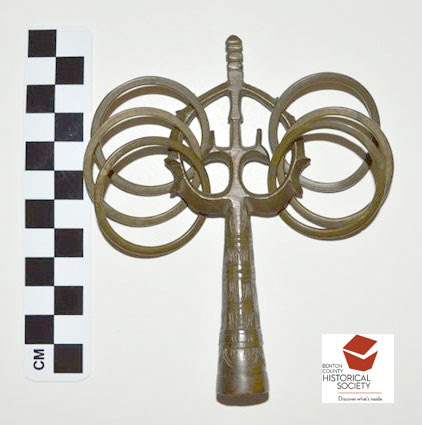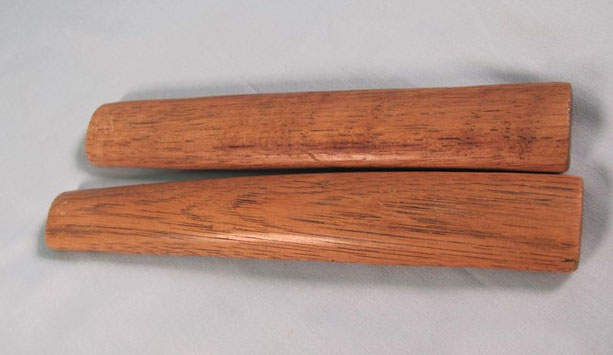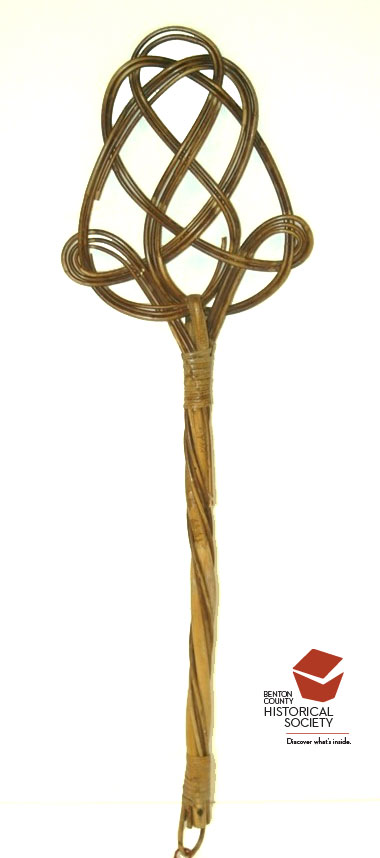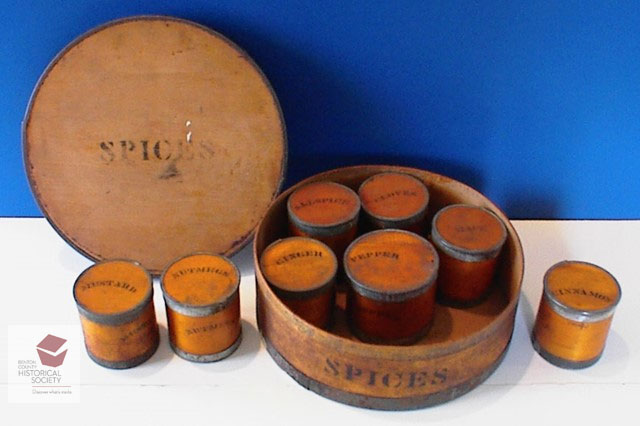Shakujo

The object is the top part (finial) of a shakujo or Buddhist staff. Adding this metal piece to the top of a bamboo, wood, or metal walking stick served several purposes. As the monk walked, the rings jangled, scaring off snakes and small animals. Bandits were also a threat and the heavy brass finial with its pointed tip served as a weapon of defense.
In addition, monks who had taken a vow of silence could use the noise of the rings to alert homeowners of their arrival. If after three shakes, no one answered, the monk could shake five times and then seven. Then, if there was still no answer, the monk had to leave.
The shakujo eventually served a more ceremonial role. Itinerant monks were required to carry a begging bowl and a shakujo as a means of identification. In monasteries, the shakujo serves as a symbol of the abbot's authority and is used to keep time during chanting.
Not all shakujos are the same but they have many features in common. The central shaft often contains the shape of a stupa (a place for storing sacred relics) and is surrounded by a circle (although sometimes two, or four loops) or trefoil. There can be 4,6,8,or 12 rings, evenly divided. Six rings, the most common number, symbolize the six perfections that lead to nirvana: generosity, morality, patience, vigor, concentration, and wisdom.


